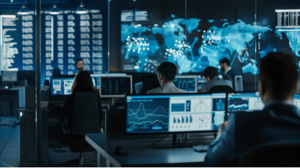Businesses working under Department of Defense contracts know that compliance isn’t just about passing a checklist. It determines whether projects move forward and whether sensitive data remains secure. That’s why agnostic service models are becoming vital for companies preparing for CMMC compliance requirements—they provide flexibility and objectivity that traditional vendor-specific approaches often miss.
Consistency Across Multi Vendor Technology Environments
Defense contractors rarely run on a single technology stack. Instead, they depend on multiple providers for cloud services, on-premises tools, and hybrid systems. Agnostic service models provide consistency across this mix, ensuring compliance frameworks function seamlessly no matter the underlying vendor.
This consistency directly benefits organizations working toward cmmc level 1 requirements or preparing for higher tiers. By eliminating bias toward any single technology, agnostic models help organizations maintain control, even if vendors change or new tools are introduced. That adaptability prevents gaps in compliance efforts and builds a stronger foundation for long-term certification.
Neutral Assessments That Reduce Conflicts of Interest
Objectivity becomes a real challenge when assessments are tied to the same providers responsible for implementing security controls. Agnostic models separate those functions, reducing conflicts of interest and providing cleaner, more transparent assessments.
This neutrality strengthens trust with both internal stakeholders and external auditors, including a c3pao evaluating readiness. Contractors pursuing cmmc level 2 compliance benefit from assessments that focus solely on actual risk and adherence to requirements, rather than product alignment or service sales. Neutrality ensures that findings reflect the organization’s reality, not a vendor’s narrative.
Flexible Integration with Existing Security Architectures
Contractors rarely want to rebuild security infrastructures from the ground up. Agnostic service models respect that investment, working with what already exists rather than forcing a complete overhaul. This approach ensures compliance requirements align naturally with the organization’s current systems.
Whether teams operate in highly regulated environments or across hybrid setups, agnostic models allow new compliance layers to fit smoothly. This flexibility helps meet cmmc level 2 requirements without unnecessary disruption, which saves resources and maintains operational continuity while still pushing forward toward certification.
Independent Validation That Strengthens Certification Readiness
Before engaging with a c3pao for official assessments, contractors often pursue independent validation. Agnostic providers excel in this space, as their evaluations carry weight without being influenced by vendor obligations. Independent validation gives organizations a realistic picture of their current posture.
By conducting gap analyses and verifying progress against compliance standards, independent assessments identify issues long before formal reviews begin. That preparation strengthens readiness and reduces the chance of delays during official certification processes. Contractors benefit from clarity and confidence when stepping into final assessments.
Scalable Frameworks That Align with Evolving Contract Demands
Contracts within the defense sector evolve quickly, and so do compliance expectations. Agnostic service models address this by offering scalable frameworks capable of adjusting to changing demands. Whether organizations are focused on cmmc level 1 requirements for basic safeguarding or moving toward advanced levels, scalability ensures continued alignment.
This adaptability becomes especially valuable for contractors pursuing larger contracts requiring cmmc level 2 requirements. As compliance demands expand, frameworks scale accordingly without forcing complete redesigns. This reduces costs over time while maintaining a consistent approach that can grow with the organization’s goals.
Objective Oversight That Identifies Overlooked Vulnerabilities
Internal teams may unintentionally overlook weaknesses due to familiarity with systems or reliance on preferred vendors. Agnostic oversight brings a fresh perspective, shining a light on vulnerabilities others might miss. That objectivity ensures compliance efforts go beyond surface-level checks.
Objective reviews identify misconfigurations, gaps in documentation, or issues with access controls that could prevent full compliance. Contractors preparing for cmmc level 2 compliance gain value from this oversight because even minor oversights can stall certification. Independent review ensures vulnerabilities are addressed before they turn into costly setbacks.
Streamlined Coordination Across Internal and External Stakeholders
Compliance involves multiple parties—internal IT, outside vendors, consultants, and government auditors. Agnostic models streamline coordination among these groups by offering a central, unbiased framework. This helps reduce duplication of work and miscommunication that often slow progress.
By acting as a unifying layer, agnostic providers create a common language around compliance goals. That coordination supports faster resolution of issues and more effective progress toward meeting compliance requirements. It ensures internal staff and external reviewers work in sync, speeding up timelines while preserving accuracy.
Comprehensive Alignment with Both Technical and Governance Controls
CMMC compliance requirements cover more than technical safeguards; they extend into governance, policy enforcement, and organizational culture. Agnostic service models address this by balancing both aspects. Technical tools are evaluated alongside governance structures, ensuring nothing falls outside the scope.
This balanced approach is particularly important for organizations preparing with the guidance of a cmmc RPO. It guarantees that policies match system behavior, and that both technical and governance requirements are fully aligned for certification. That depth of alignment strengthens not only audit results but also long-term resilience in handling sensitive defense information.



